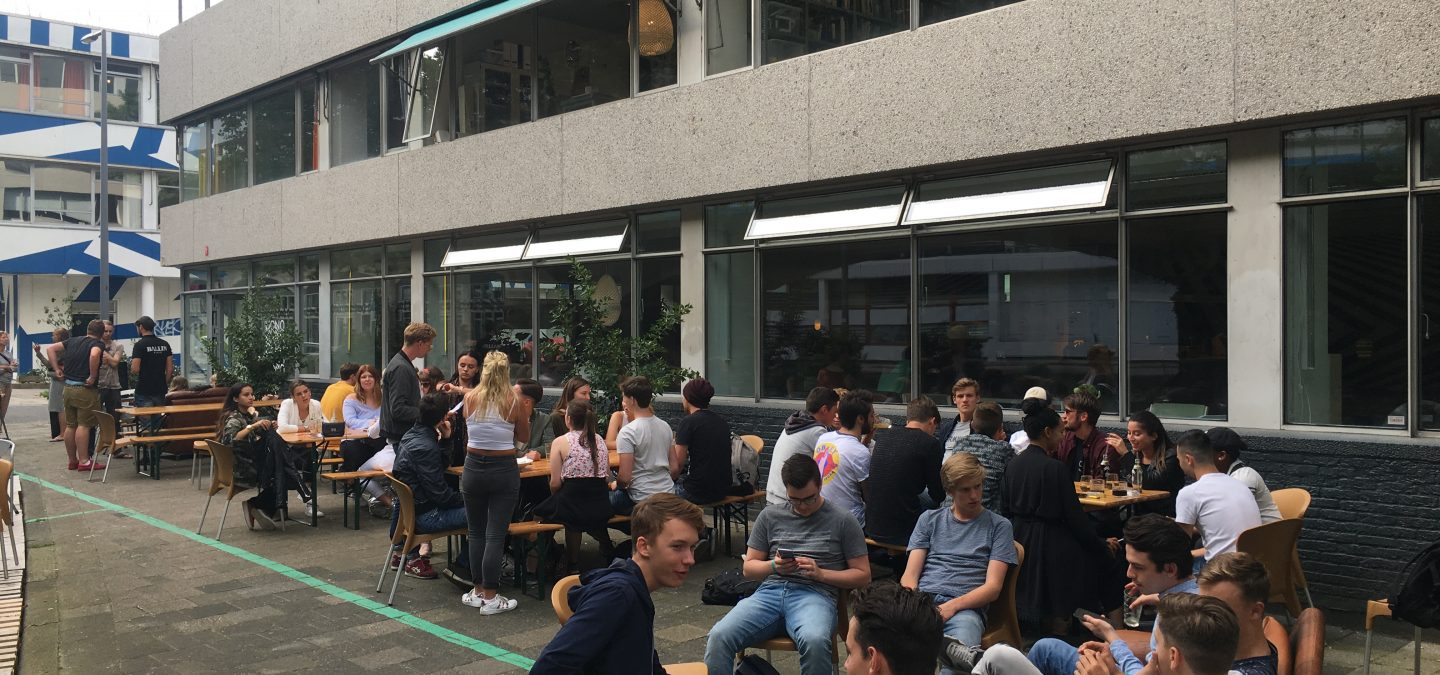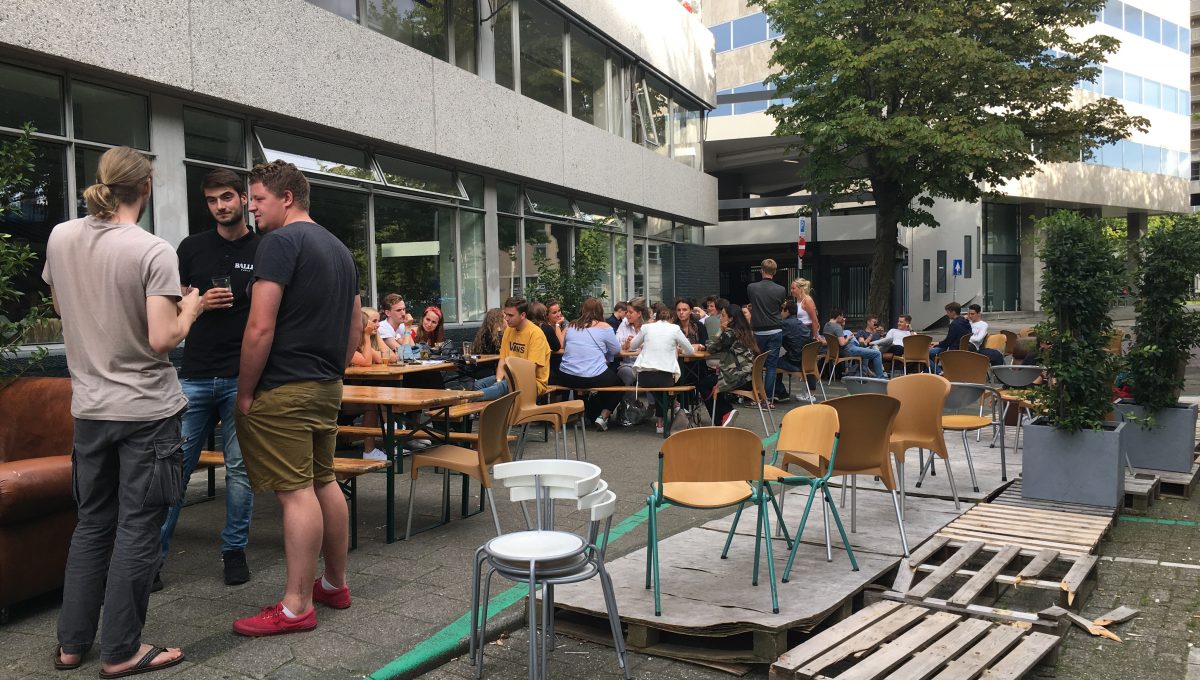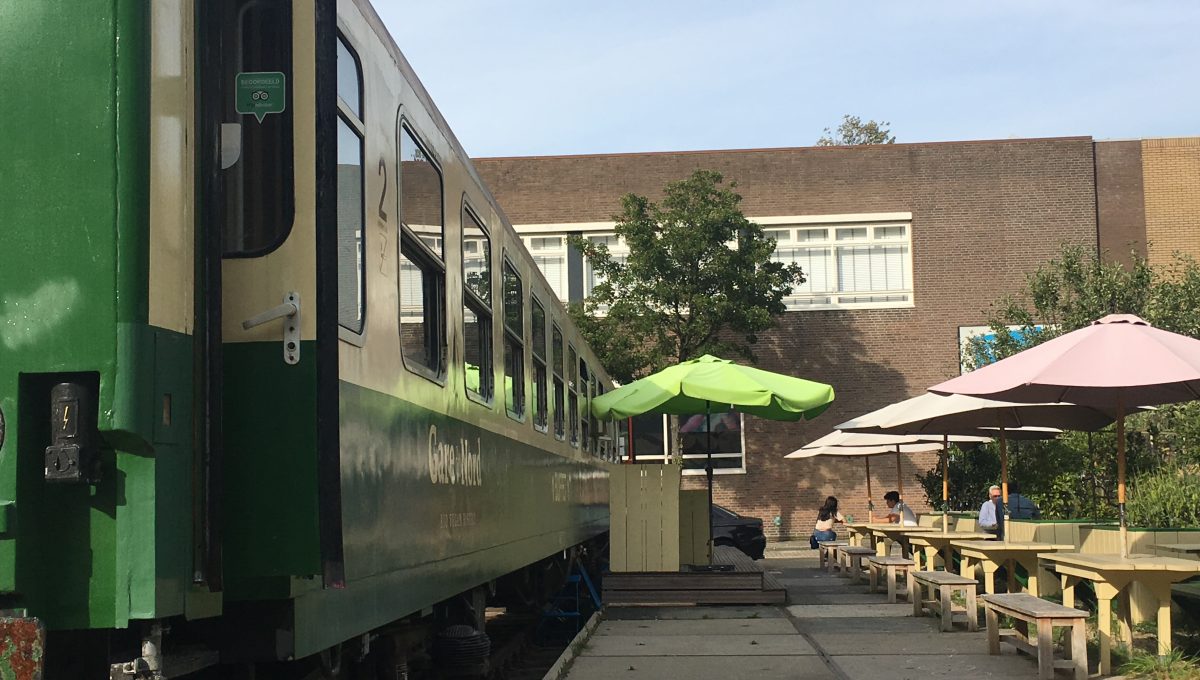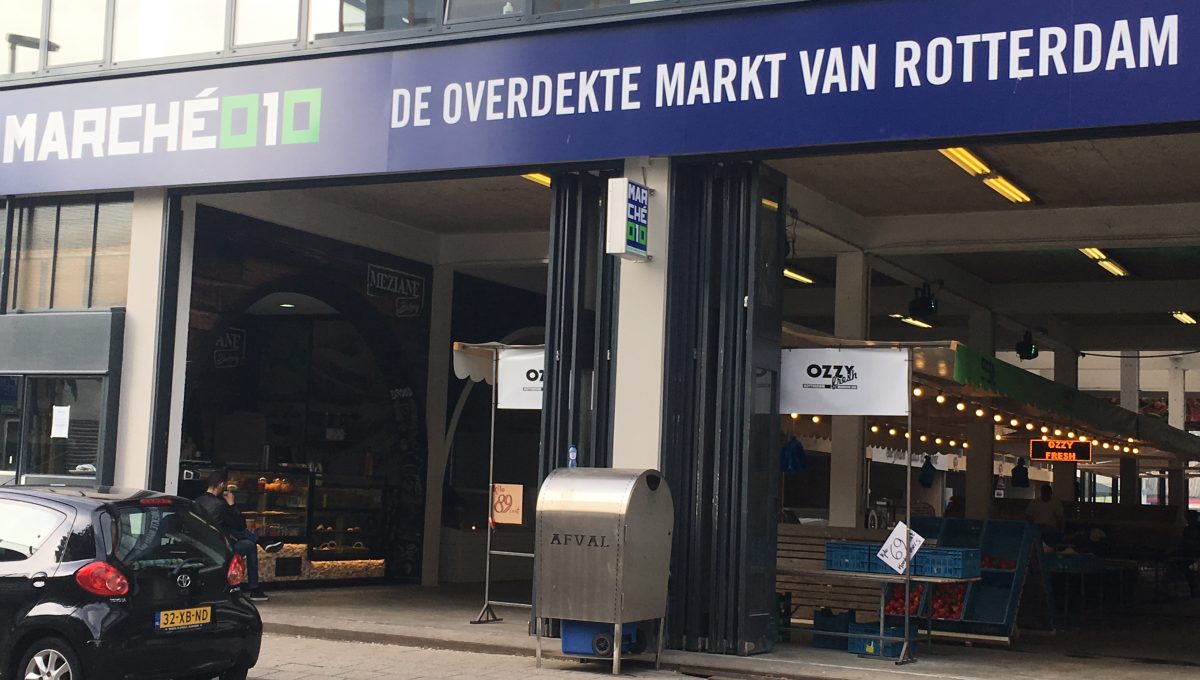
Keep up with our latest news and projects!

ZOHO, as Zomerhofkwartier is often referred to, is an industrial estate just a ten-minute walk from Rotterdam Central Station. For years it was a no-go area. Vacant business properties, rundown streets and closed façades didn’t make the area particularly inviting. Anyone walking down Zomerhofstraat today can drink a café latte or a Noordtsingle beer at a trendy outdoor café. Now the area is attracting an increasing number of people. Since 2013, the housing association Havensteder, the municipality and entrepreneurs have joined forces to literally break open the area. An incentive grant of 100,000 euros provided by the municipality to address the plinths and outside area (the city at eye level) was an excellent opportunity to kick things off.
‘We applied for the grant as a consortium,’ says Paul Elleswijk, project leader at Havensteder, ‘together with the municipality and with entrepreneurs from all over Zomerhofkwartier.’ Maria Kluijtenaar, trainee in housing policy at Havensteder explains: ‘When applying for fnancing you usually have to meet all kinds of requirements. But everything was very open with this project.’ Jacco Bakker, area manager for the north of Rotterdam, adds: ‘We included the investment from entrepreneurs in our proposal. Twenty entrepreneurs will each dedicate 100 hours to the project. This commitment has also enabled us to expand our network. The project shows what the social returns are and how you can encourage others to invest as well.’ ‘Not everyone at the municipality was in favour of awarding an incentive grant to an area where few people were investing in fnancially, but the project was approved,’ Paul says. ‘The Urban Development Department often backs larger systematic interventions,’ Jacco says. ‘This project’s approach was far more process-driven and intricate. Not everyone has a feel for that, and as a result fewer of these kinds of projects come their way. So it’s special that the municipality decided to take on this experiment in the end.’
 MONO in ZOHO - © Dahlia Soliman
MONO in ZOHO - © Dahlia Soliman
‘When the money was granted,’ Jacco says, ‘the big question was how to further develop the project without shutting out possibilities.’ ‘We didn’t want to make the mistake of doing everything ourselves,’ Paul says. ‘We involved STIPO and together we organised a placegame and asked our partners to submit and present their plans. That created a lot of energy. It was also an opportunity to draw attention to the overall area and get people from different buildings to work together. Havensteder also contributed another 25,000 euros.’
‘We then set up a jury,’ says Paul, ‘with three partners: Havensteder, STIPO and the municipality. The three of us quickly agreed on allocation, but it was trickier to show that our assessment was objective and transparent. In the end, there were eight proposals, all of which were honoured. Every initiative was worthwhile. Some initiatives received the entire amount that they applied for whereas other received a portion of that amount. For the latter group, we tried to fgure out what kinds of other support would help their projects move forward.’
The accepted projects include the frontage for Broeinest on Zomerhofstraat, now completed, a frontage for ‘de Mafkees’ (‘Nutcase’) Hostel, which is in the pipeline, a project that wants to make better use of sidewalks and make them more lively by installing benches and fowerpots, and refurbishing the entrance to Marché 010, a new market hall. There are also art projects, such as the application of illuminated letters and a project with light boxes/open windows. These are all interventions in the plinth in the broadest sense of the term.
 Gare du Nord at SOHO - © Dahlia Soliman
Gare du Nord at SOHO - © Dahlia Soliman
‘The plan was to complete all of the projects within a year,’ says Paul. ‘Only one of the projects has been implemented after a year, while four projects are due to be completed soon, one has been cancelled and two are uncertain. In practice, realising projects can be quite complicated. I am disappointed by that.’ ‘I’m not so disappointed,’ Jacco says, ‘but I had hoped for things to go smoother. But it takes time. That’s an inherent aspect of trying to do a great deal with little money. Each of the eight projects is being carried out by the applicants themselves. That’s a considerable responsibility: you’re being asked to handle every aspect of the project, from A to Z. These people also have to deal with matters that they normally aren’t confronted with and know little about. The application for a building permit turned out to be an obstacle for a young entrepreneur, for example. We weren’t suffciently aware of these things beforehand.’ Maria adds: ‘For many entrepreneurs a project like this means extra work. They do it on the side. That’s not the case for entrepreneurs whose own business is directly affected by the project. Building the frontage of Broeinest was directly linked to the business and to an establishment criterion to occupy the building.’
‘I think that we could be more visible,’ Maria says. ‘There’s no clear contact person at the municipality or Havensteder, and it’s not always clear where the responsibility lies. People also want to be sure that they can get to work and won’t be pulled back by the municipality or the owner of the building.’ ‘We could communicate better about the approach,’ Jacco says, ‘spending
time on showcasing our success stories and referring people on more often. Communication is a bit of a neglected child.’
‘Social capital is not one of Havensteder’s strong points,’ Paul says. ‘Social return is hard to measure, and therefore it’s diffcult to get internal support for it. You’re always confronted with construction setbacks in these kinds of buildings. That’s another hurdle in the process that needs to be overcome.’ ‘There’s not always understanding at the municipality either,’ Jacco says. ‘It’s kind of viewed as straying from the beaten path. But so much has changed in the area: the liveliness, the atmosphere, the use of Zomerhofstraat. The fence around Scrap and the door of Marché 010 have become much more attractive. The project also gave us a clear reason to continue to meet with the other partners in the area and exchange ideas.’ ‘I hope,’ Paul says, ‘that later we’ll be able to show that the positive developments in recent years are still going strong.’ ‘The incentive grant enables you to produce quality, and that raises the bar for future partners who want to invest in ZOHO,’ Jacco says.
 Marche 010 at ZOHO - © Dahlia Soliman
Marche 010 at ZOHO - © Dahlia Soliman
Interested? Join The City At Eye Level and share your story!
Discover more